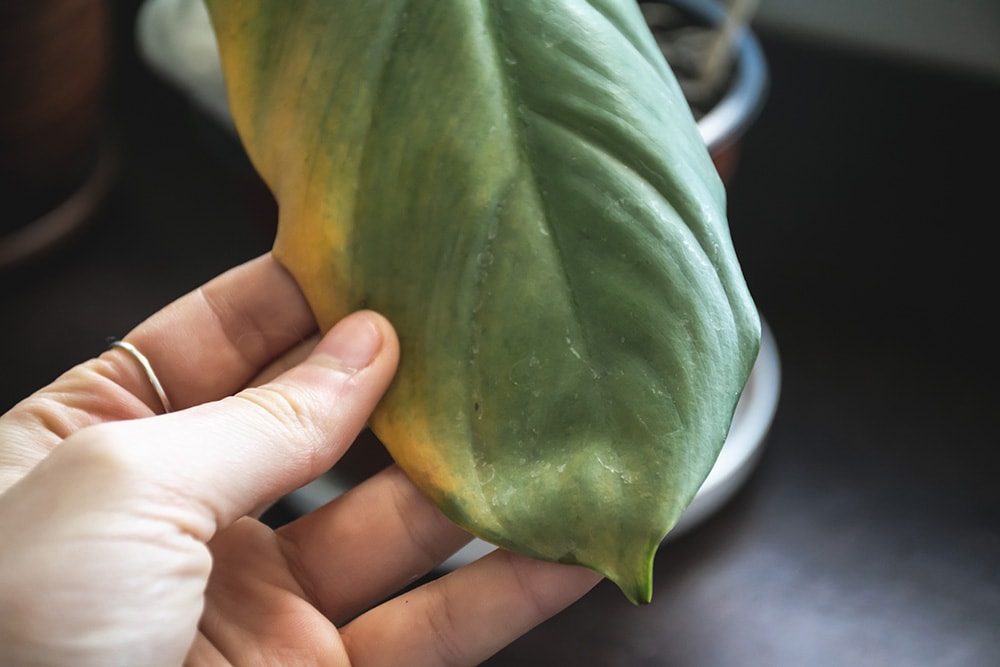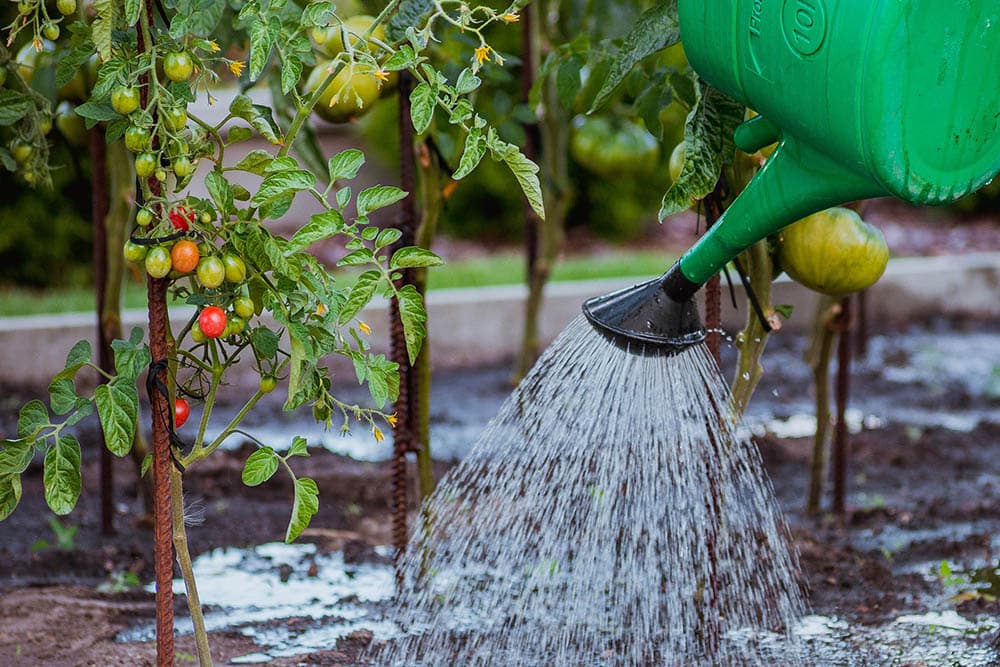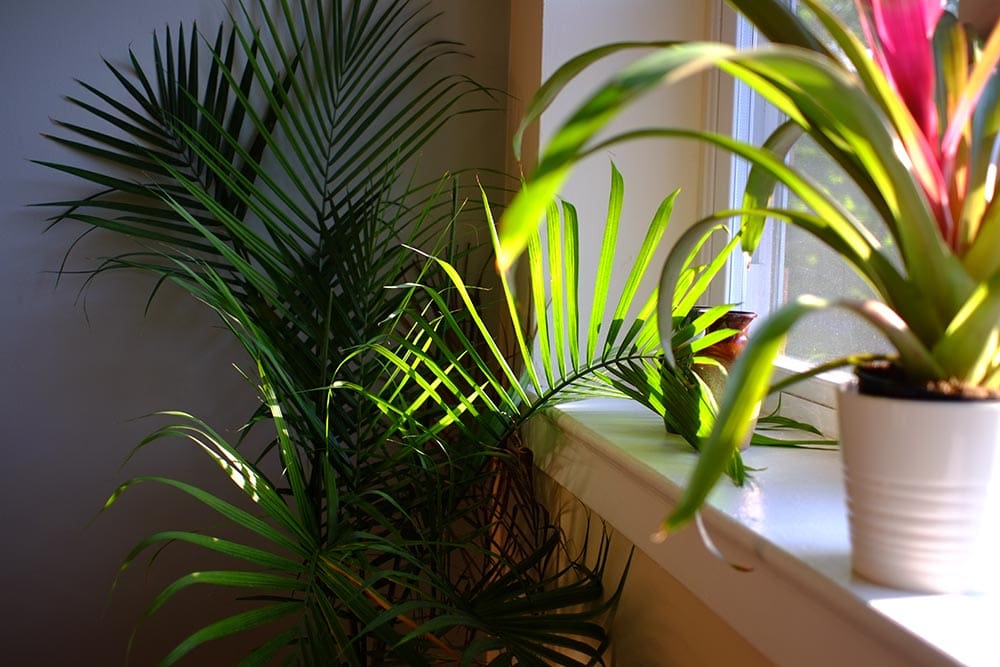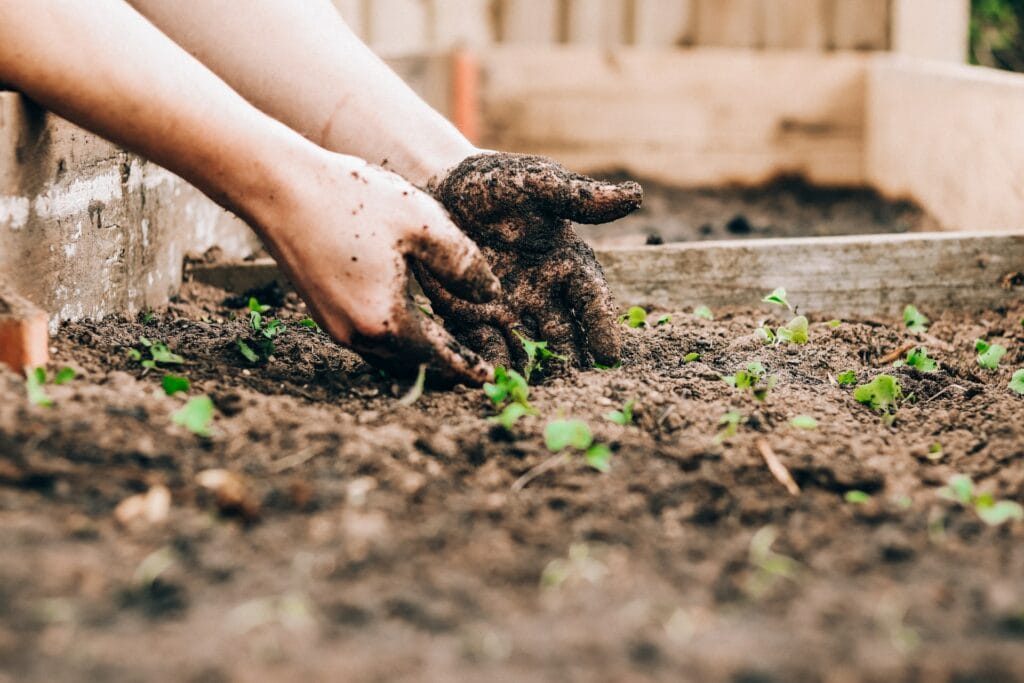Why the Tips of Your Houseplant’s Leaves Turn Brown: 8 Ways to Fix It
-
Lindsey Lawson
- Last updated:

If the tips of your houseplants begin to turn brown, it will undoubtedly leave you concerned and quite possibly perplexed. There are quite a few reasons why this could be happening, with most of them revolving around care requirements.
Before you can do anything about it, you need to identify the problem because if you try the incorrect fix, it could cause more harm than good. Here’s a look at the reasons why your houseplants tips are turning brown and how you can go about fixing it.
The 8 Reasons the Tips of Your Houseplant’s Leaves Turn Brown
1. Overwatering or Underwatering

Proper watering is key to a plant’s survival. Different plant species are going to have varying water requirements and if you overwater or underwater your houseplants, the tips of their leaves may begin to turn brown.
Typically, a houseplant that has been underwatered will begin to turn brown as an attempt to conserve moisture for survival. On the other hand, if you have overwatered your plant and drenched the soil, your plant will become deprived of oxygen and will begin to turn brown as well.
How to Fix It
You need to be aware of your particular plant’s watering requirements throughout the seasons. You can purchase a pot with drainage holes that will allow the excess water to drain out between those regular waterings and prevent the roots from drowning.
If your issue is due to dried-out soil and underwatering, provide enough water to nourish the plant and then water it in the correct amount and frequency depending on the type of plant.
Some plant species may need bottom watering, where you place the pot in a couple inches of water and allow the soil to absorb through the drainage holes. This is why knowledge of your plant is so important.
2. Improper Lighting
Houseplants come from all over the world and grow in a wide variety of climates and conditions. If you are not providing a particular species with the proper light requirements, it can cause the tips of its leaves to turn brown.
A lack of light will result in decreased production of chlorophyll, which is what gives plants their green color and carotenoid. This results in a color change and other signs such as leaning stretched stems, and lack of flowering in certain species.
If a houseplant is receiving too much light, the chlorophyll and carotenoid will absorb more energy than necessary from the lighting, which can ultimately destroy the plant. Excess lighting can also pull the moisture out of the leaves and quickly dehydrate the plant and the soil.
How to Fix It
If it has been determined that your plant is not receiving the prospering lighting requirement for its species, you need to find a way to place it in a spot that suits its needs. If it is a plant that requires a lot of sunlight, place it in a window or under a grow light.
If a plant has low lighting requirements, move it away from places that get heavy sunlight. With some plants you may want to move them into a lighter area for a certain period during the day, then move them to their original place once they’ve received enough sunlight for the day.
3. Lack of Nutrients

Nutrient deficiency is a very common cause of leaf yellowing or browning. The color change may even display distinct patterns. A lack of nutrients can also stunt growth and result in poor flowering or fruiting in species that do so. While plants need water, fresh air, and sunlight for growth, they also need macronutrients and micronutrients to sustain themselves.
If a plant begins lacking in these essential nutrients, it will begin to deteriorate. Plants get their nutrients through the soil and if the soil they are in is lacking, they could be in trouble.
How to Fix It
Either before you purchase a plant or right when you make the purchase, you need to read about proper care requirements and the type of soil it needs to thrive. If you placed your plant in improper soil, it’s time to get the proper soil and carefully transplant it.
If your plant is just in need of some extra fertilizer, check into the proper amounts necessary to restore its full health and ensure you continuously provide what it needs.
4. Too Much Fertilizer
While lacking nutrients can be a problem, so can an excess of nutrients. Too much salt buildup from fertilizers may also cause the tips of the leaves to turn brown. All living beings need a proper balance of nutrients and there are such things as too much and too little.
You could even be providing the correct amount of fertilizer per the plant’s care requirements, but salt can accumulate over time and cause this to happen. When you water your plants with tap water, it can also cause a buildup of excess minerals.
How to Fix It
Make sure your plant is potted in the correct soil type for the species. Ensure that your plant is properly fertilized and repot as needed if you feel there is excess mineral buildup going on. It’s a good idea to use distilled or filtered water to prevent this from happening as a result of regular watering.
5. Temperature or Humidity

Since houseplants come from all across the globe from different climates, they will need to be kept in proper temperature settings with the right amount of humidity to thrive properly.
Most houseplants do well in temperatures ranging from 65 and 80 degrees Fahrenheit, which is why they made it to the houseplant list in the first place but that doesn’t mean they can’t be affected by temperature and humidity levels within the home.
How to Fix It
Depending on the species and its care requirements. If your thermostat is consistent and your plant should be thriving at your indoor temperature, pay attention to its location. Is it located near a vent that is blowing either hot or cold air? Is it next to the fireplace or in a window that warms up in the summer sun?
If your home is at the right temperature and you have ruled out other issues like temperature, lighting, watering, and nutrition, it may be related to humidity. Too much or too little moisture in the air can affect certain plants and the tips of their leaves will begin to turn brown. If too little humidity is the issue, try getting a humidifier or even get a spray bottle to mist the area regularly.
6. Pests or Disease
Indoor plants are susceptible to pests such as aphids and spider mites as well as certain diseases. This is another potential cause of browning leaf tips, as pests and disease can both degrade the plant’s health.
Aphids and spider mites will suck out the juices in the plant, causing malnutrition and fading of coloration. Aphids look like small grains of rice on the ends of the stems and spider mites create hair-like webs on the underneath of plants. They are barely visible to the human eye.
How to Fix It
Both of these parasites can be controlled with organic houseplant insecticides. Neither one thrives in humid environments so if high humidity is something your plant can handle, you can consider misting it and raising the humidity level to help keep them under control
If you notice signs of disease in your houseplants, try and identify what you are working with because you may be able to get ahead of the situation and defeat the disease by cutting out the rot (if in a proper area of the plant) and ensuring you keep up correct care requirements for the species.
Avoid overcrowding plants in the first place and be sure to isolate the ones showing signs of disease. In some cases, you may not be able to cure the disease and you may lose the plant.
7. Change of Environment

If you recently brought your plant home or transported it from one place to another, those drastic environmental changes that take place during transport could cause the tips of the leaves to go brown. Some plant varieties may even drop leaves during a transition
How to Fix It
This problem typically resolves itself as long as you are properly caring for your plant once it has been settled into the new environment. It’s best to wait at least two weeks to repot your plant after bringing it home, if possible. That way it has time to adjust to the change of environment before going through the stress of repotting.
8. Growth Process
Some plants may go through a period of yellowing or browning as they mature. The foliage may even fall off and new could appear. This is not a sign of illness or trouble with your plant, it’s just part of their growth. Make sure you know your plant’s growth process, so you aren’t surprised by this.
Preventing Brown-Tipped Leaves
So, what’s the best way to prevent the tips of your houseplant leaves from turning brown? You need to know your plant. Plants are living beings that have very specific care requirements that vary depending on species, natural climate, growth conditions, weather patterns, and more.
Before you purchase a plant, gain as much knowledge as you can about what it will need to thrive and be well prepared beforehand.
- What kind of sunlight or shade does the plant require?
- What kind of soil does this plant thrive in?
- Does this plant have certain humidity requirements?
- What temperature ranges will this plant thrive in?
- How often and how much should I water this plant?
- Are pests attracted to this type of plant?
Conclusion
There are many reasons why your houseplant may present browning on the tips. It’s important to implement proper care requirements to ensure your plant is as healthy as possible, but if you notice yellowing or browning, it’s time to identify the root cause. Once you determine the reason, you can do your part to remedy the situation and restore your plant’s well-being. Make sure to have extensive knowledge of each plant in your care, as it will be beneficial in the long run.
Featured Image Credit: Amverlly, Shutterstock
Contents
